On June 11th, Chief Minister Siddaramaiah boarded a BMTC bus, turned conductor for a few minutes, and issued the first free tickets to women passengers as part of the Shakti scheme. Free bus travel is one of the five guarantees of the newly formed Congress government and the first to be fulfilled.
While the scheme has been appreciated by many women, several issues need to be resolved to sustain it in the long term, according to public transport advocates.
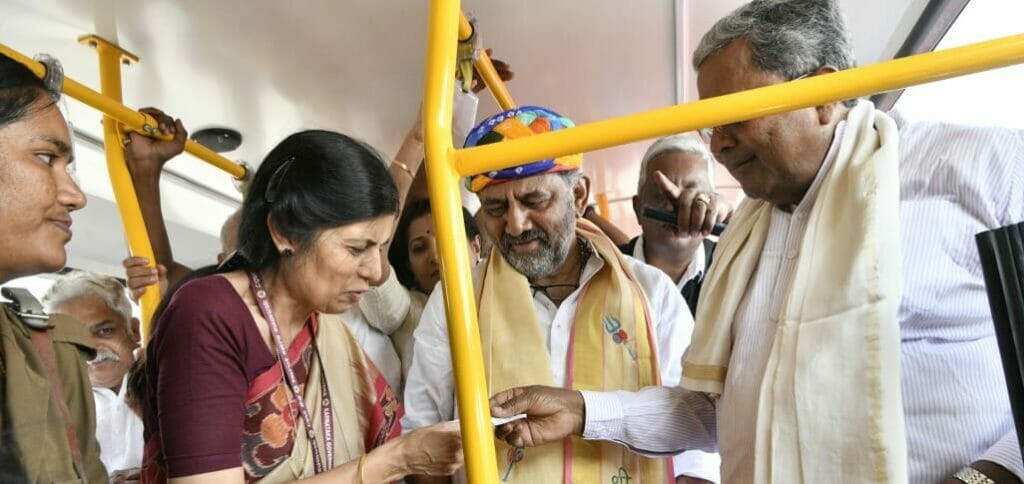
Bengaluru Bus Prayanikara Vedike (BBPV), a group lobbying for better bus service in the city, welcomed the move by the state government. “Public transport is a social investment that is essential for accessing fundamental rights like education or health,” says Shaheen Shasa, a founding member of BBPV.
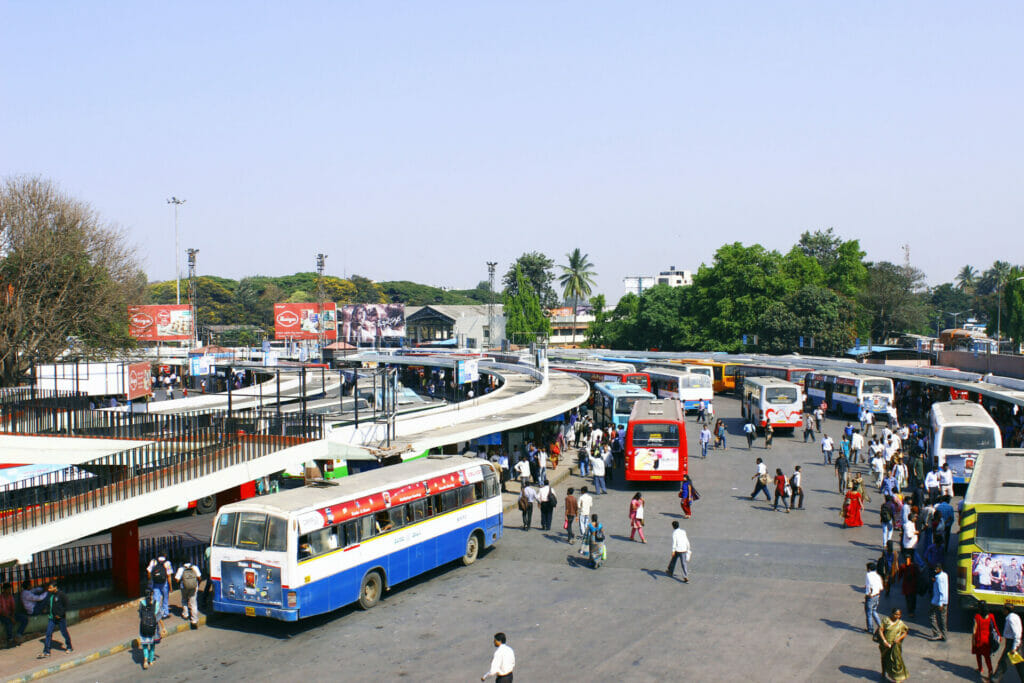
Mobility is key to accessing fundamental rights
BBPV started in 2013 as a campaign for reduction in fares, but that campaign had limited success, explains Shaheen. However, in 2021, the group began campaigning for free bus travel for women. “We saw in many low-income working-class communities, women were really suffering,” says Shaheen.
She observes that women are often the primary earners in some of these communities and spend most of their earnings on the family. And they are the most likely to experience mobility constraints.
“Mobility in women is restricted to the three-to-four-kilometre radius within which they can walk. They have to find work, education and recreation within this,” Shaheen says. “Free bus means their world opens up. They can seek other job opportunities. Girls can access higher education in different parts of the city.”
However, Shaheen and others are clear that just making travel free is not going to serve women. BMTC also needs to improve bus connectivity and ensure all parts of the city are well served.
Improve bus connectivity
The free travel scheme is important because it gives vulnerable sections of society better access to mobility. But better access is not just about cost. Connectivity and frequency are also important, points out Shaheen.
BMTC bus connectivity has been a problem, particularly in the peripheral areas of the city. In April this year, open data enthusiasts, at a datajam organised by OpenCity.in, found that outer assembly constituencies like Yelahanka and Mahadevapura had poor bus connectivity. These constituencies typically had fewer bus stops. They also often had lower frequency of buses compared to the older, central areas of the city such as Chickpet and Shivajinagar.
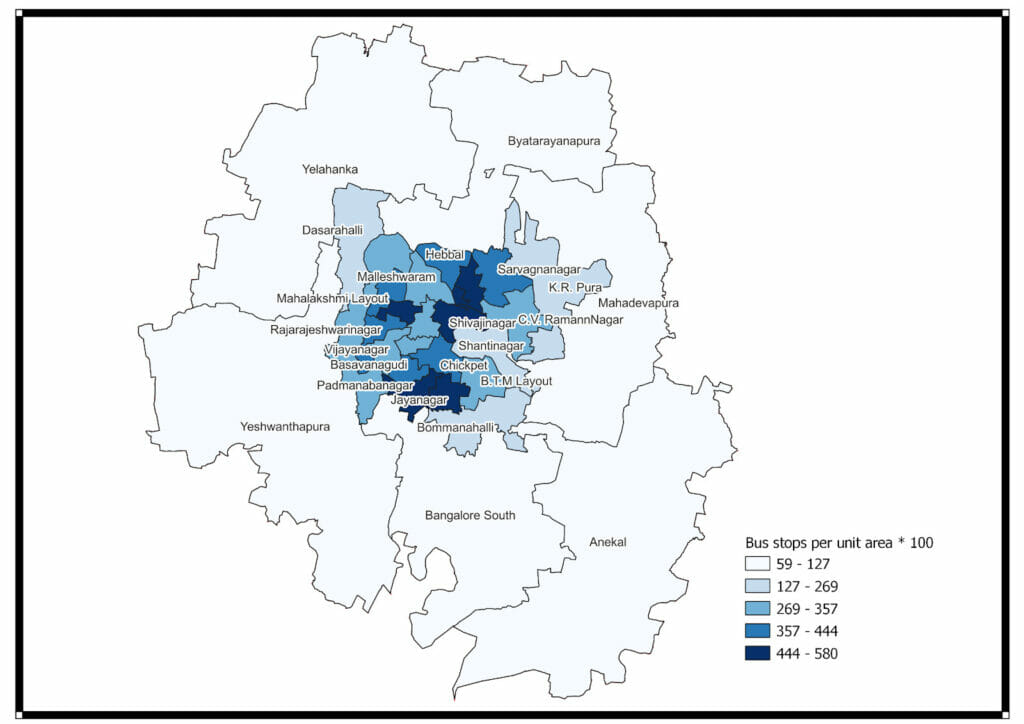
Read more: Public data enthusiasts evaluate access to public transport in Bengaluru
Even within somewhat better served constituencies, neighbourhoods with low income or informal settlements often have little to no bus access.
Bus audits
Alli Serona, a collective of civil society organisations, artists and think tanks, conducted audits of bus connectivity in seven such neighbourhoods in Bengaluru. The audits covered Hosa Nagar and Chikka Banaswadi in CV Raman Nagar, Priyanka Nagar and Seegehalli in KR Puram, Byrasandra in Jayanagar, LR Nagar in Koramangala, and AKG Colony and Vijayanagara in Mahadevapura.
Tanisha Arora, creative strategist and member of the collective, says that women living in these areas conducted the audits themselves. “Our experience has been that especially in low income communities women are most dependent on buses. They don’t typically use the Metro [which is much more expensive] and don’t have access to private vehicles like the men do. It is not just the cost difference but many other reasons why they don’t always use the metro. They feel more comfortable using buses, which also have relatively better access and connectivity compared to a metro,” says Tanisha.

The audits revealed that one of the most dominant issues with mobility was the cost of bus tickets, explains Tanisha. “We realised, through our research, that Bengaluru is one the most expensive cities in terms of public transport. The buses are more expensive than Mumbai and Delhi.”
“So, bus travel being free was definitely a welcome move. Around 25-30% of their salary used to go into bus travel,” Tanisha says.
Accessibility is key
The other dominant issue that emerged was accessibility. In many of the seven neighbourhoods, bus stops were either far or non-existent. Residents of Priyanka Nagar and Seegehalli in KR Puram, had to walk two kilometres to access the nearest bus stop. Residents of Chikka Banaswadi, CV Raman Nagar, had to walk half a kilometre to a bus stop with no shelter, seating, or visible signage.
In Hosa Nagar, CV Raman Nagar, the frequency of buses was low. Women conducting audits in Mahadevapura found the need for an increase in bus frequency to the Kadugodi Santhe or market on Thursdays.
“Each community and neighbourhood has different mobility needs based on their circumstances and location,” says Tanisha.
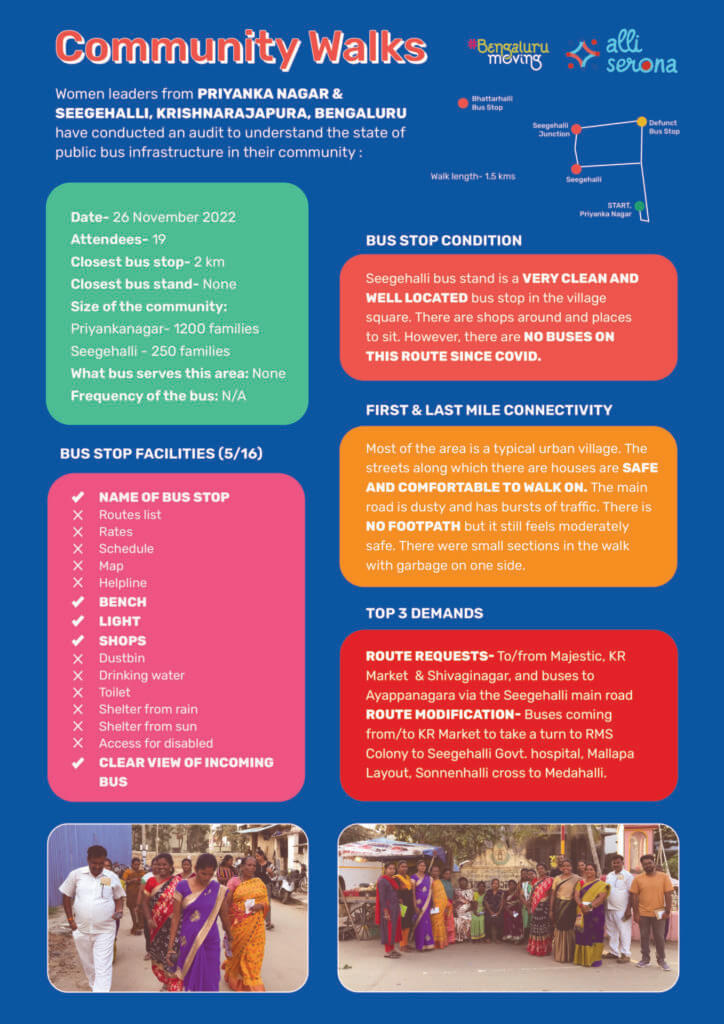
Shaheen stresses the need for BMTC to revise its routes, based on a more participatory approach. “There is a need to revisit BMTC’s route network. We need to understand how it is connecting the city today; is it connecting all areas equally, and is it connecting travel routes optimally?”
She adds: “Free bus by itself will not benefit much if women still have to spend Rs 15-20 to reach the bus stop or walk a lot.”
Read more: BMTC gets little budgetary support despite escalating losses due to higher fuel costs
Increased pressure on staff
Despite the connectivity issues, the free bus scheme is likely to become a hit. According to the State Transport Department statistics, 17 lakh women rode BMTC buses on June 12th, a day after it was launched. Female ridership is projected to consistently increase, but can the BMTC handle this load?
“On Sunday when I travelled on BMTC bus, I could the see the conductor was already looking a little hassled at the sudden increase in passengers,” says Shaheen.
A BMTC employee and union member, who did not wish to be named, agrees with Shaheen’s observation. He believes the free bus scheme is a good idea, but BMTC staff were already feeling the burden.
BMTC staff have a set kilometre target that they have to accomplish. “Due to traffic and the lack of staff, we have had to work 10-12 hours minimum to complete our kilometres,” says the BMTC employee. “Due to the pressure, the staff becomes stressed and rude with passengers.” The increase in women passengers will add to this stress, according to him.
Not enough buses
“Now that women passengers are increasing, we need to add more buses and routes to manage this,” the BMTC employee says. The state transport department claimed in a report that BMTC would need to add 4,028 buses to it fleet to match the demand.
However, both Shaheen and the BMTC employee point out that BMTC currently does not have enough staff to manage its existing fleet. In a statement released just after the elections in May, BBPV had pointed out that the corporation had not kept pace with the city’s growth.
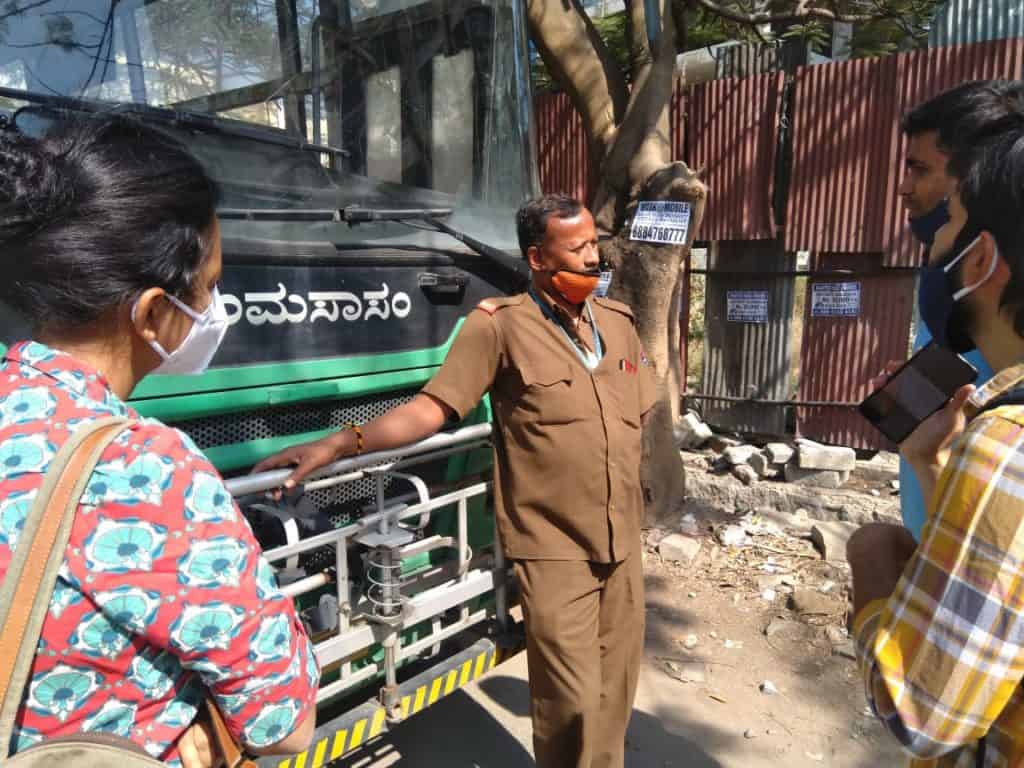
“While the city’s population has grown to 1.3 crore and private vehicles over 1 crore, the bus fleet has hovered around 6,000 to 6,500 for over a decade,” according to the BBPV statement. Transport Minister Ramalinga Reddy recently said that the government would procure 1,500 new buses for BMTC within the year.
Congress’ manifesto promised to expand the BMTC fleet to 10,000 in five years. But this is too slow to accommodate the unmet demand and the required growth, according to the BBPV statement. “The fleet should be expanded in a two-three year window.”
However, the minister made no statement on the recruitment of staff for these buses.
End hiring freeze
The corporation is not able to operate its current limited fleet fully, because of a hiring freeze imposed by the previous government, according a report in April 2023. A 1,000 buses already lie unused because of this, says the BMTC employee.
After a long battle to increase wages for the current staff, the union has now asked BMTC to start recruitment again. “BMTC needs not just more drivers and conductors, but also maintenance staff,” he adds.
“All of this is going to obviously cost. And our government has a very bad record in reimbursing the agency,” says Shaheen. A 2021 CAG audit noted that state governments consistently underpaid BMTC for the various concessions that the corporation gave commuters.
Between 2015-2021, BMTC had incurred a loss of Rs 2,741.19 crore in revenue by giving concessions to students, senior citizens, and differently-abled passengers. The state government only reimbursed the corporation with Rs 1,867.62 crore, leaving the agency with a shortfall of over Rs 800 crore.
The government has to reimburse BMTC for the cost of free services and invest in the agency for better infrastructure. “BMTC is doing a public service and for whatever cost they incur, they need to be reimbursed on time.”